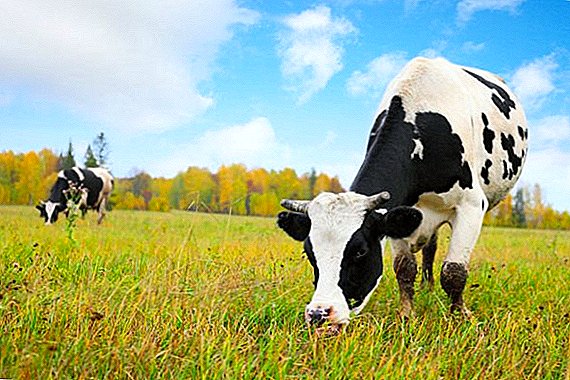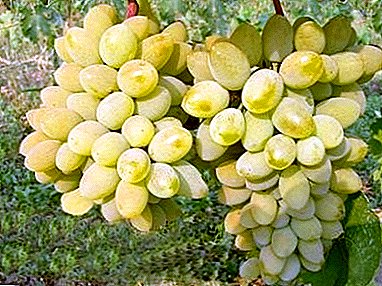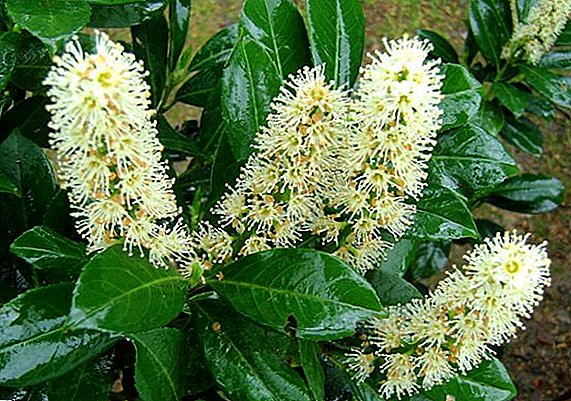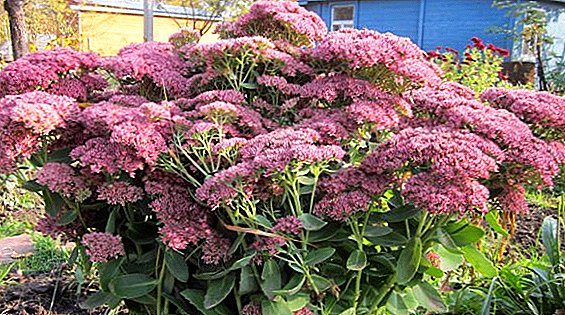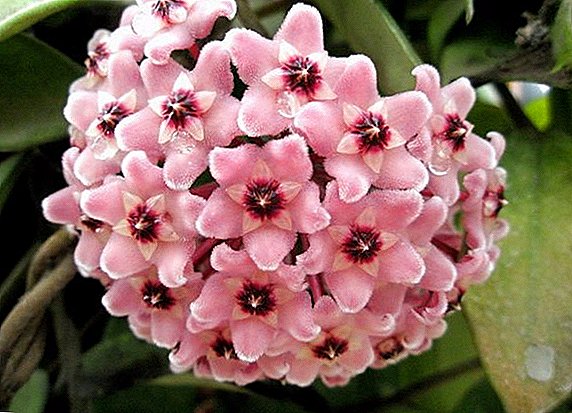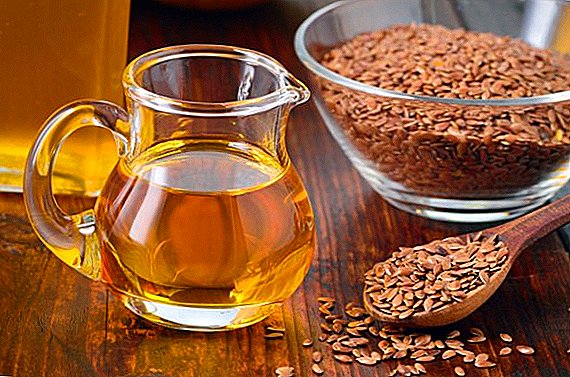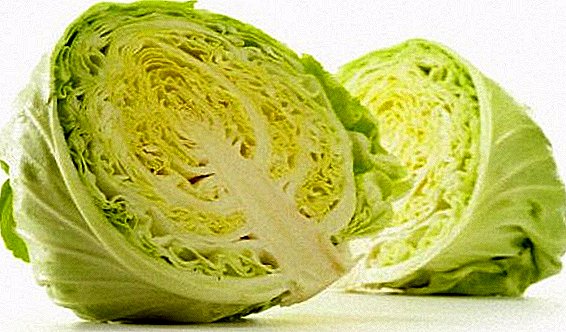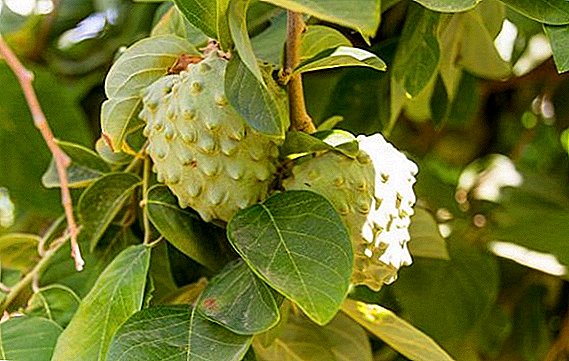 Sweet, fragrant, healthy - all this is about the fruits of the exotic tree Annona. In temperate climates, they are not often encountered: commercial production is hindered by the short shelf life of the fruit.
Sweet, fragrant, healthy - all this is about the fruits of the exotic tree Annona. In temperate climates, they are not often encountered: commercial production is hindered by the short shelf life of the fruit.
In the article, we will not only reveal the secrets of the "sugar apple", but also tell you how to grow this tropical tree at home.
Description
Annonovye - a family of flowering plants. Annona is a tree with characteristic large double-row leaves. The height of an adult plant is 3-6 meters, at home it grows no more than 2 m.
Did you know? Except the "sugar apple", Annonu is also called "bull heart", "sour-cream apple", "sour bread", "buddha head".Yellow large Annona flowers have a sweet pleasant smell, grow along the branches and the trunk.
 Prickly fruits of irregular shape grow from 10 to 30 cm in length, have a weight of 1-3 kg. The “sugar apple” hides under its skin the creamy fragrant pulp and black seeds. The fruit has a sweet taste, reminiscent of pineapple and strawberries at the same time.
Prickly fruits of irregular shape grow from 10 to 30 cm in length, have a weight of 1-3 kg. The “sugar apple” hides under its skin the creamy fragrant pulp and black seeds. The fruit has a sweet taste, reminiscent of pineapple and strawberries at the same time.Lovers of exotic fruits will be useful to learn how to grow pineapple, mango, pitahaya, rambutan, feijoa, papaya, jujube at home.
Various species of this tree are widely cultivated in Africa, Vietnam, Thailand, the Philippines, and also in southern America. Annona begins to bear fruit at the age of 3-4 years. Crop season varies by variety.
Kinds
Total genus includes more than 160 species, but the main ones are:
- Annona cherimola Mill. A small tree originally from Ecuador. Represents the greatest fruit value among all species. Conical fruits are covered with hard skin, weight - up to 3 kg. The seeds are like black beans. The flesh is sweet and aromatic.
- Annona spiny (Annona muricata L.). The barrel is slightly lower than that of the cherimoya, and the fruit is larger - up to 7 kg. The pulp is fibrous, justifies the nickname of this species.
- Annona reticulata (Annona reticulata L.). A tall tree that grows up to 10 m. Fruits are small - up to 15 cm in diameter, excellent for preparing desserts.
- Annona scaly (Annona squamosa L). The most popular species for home cultivation. It is a small tree 3-6 meters in height. Fruits are medium-sized, greenish-gray, have notes of cinnamon in flavor.
- Annona purpurea (Annona purpurea). The tree is originally from Mexico. Fruits of medium diameter, different orange pulp, which texture resembles persimmon, and taste - mango.





Important! Not all plants from the Annon family are cultivated for edible fruits. Some species (parts of these plants) are used to treat various ailments in traditional medicine.
Composition
Annona sweet fruit has a low calorie content - only 75 kcal, as well as good nutritional value, which is listed in the table below.
| Squirrels | 1.6 g |
| Fat | 0.7 g |
| Carbohydrates | 18 g |
The fruit does not contain cholesterol or saturated fat, but it includes a lot of nutrients, vitamins and minerals:
- fiber - 3 g;
- folic acid - 23 mcg;
- Niacin - 0.64 mg;
- Pantothenic acid - 0.35 mg;
- pyridoxine - 0.26 mg;
- Riboflavin - 0.13 mg;
- thiamine, 0.1 mg;
- Vitamin C - 12.6 mg;
- Vitamin E - 0.27 mg;
- sodium - 7 mg;
- potassium - 287 mg;
- calcium - 10 mg;
- copper - 0.07 mg;
- iron - 0.27 mg;
- magnesium - 17 mg;
- manganese - 0.09 mg;
- phosphorus - 26 mg;
- Zinc — 0.16 mg;
- beta carotene - 2 mcg.

Did you know? Guanabana is used in pharmacology to create experimental anticancer drugs.
Beneficial features
Due to its rich chemical composition, Annona boasts such useful properties:
- Anti-inflammatory effect and increased immunity. The fruits of the "sugar apple" - a powerful antioxidant that helps the body to resist infections and inflammatory processes.
- Protection of the cardiovascular system. Annona improves blood pressure, is used to prevent stroke and heart attack.
- Anticancer action. Antioxidants that make up the fruit neutralize radicals, which are the main cause of the formation and development of cancer cells.
- Prevention of osteoporosis. High calcium content in fruits supports the health of the musculoskeletal system.
- Natural protection against constipation. One fruit of Annona contains an almost daily rate of fiber, which helps gently cleanse the digestive tract of toxins and accumulated food.
- Eating the fruit of the "sugar apple" also has a beneficial effect on the skin, mood, and also slows down the process of the appearance of gray hair.

How to choose and how much to store
In order to fully enjoy the delicate taste of Annona, you need to be able to choose it correctly. Ripe fruit has the following features:
- size not less than 10 cm in diameter;
- greenish, gray or slightly brownish tint;
- sweet smell, which is felt at a distance;
- seeds are smooth, shiny;
- pulp fibrous, creamy.
Before buying guanaban, you need to know the fruiting season of the selected type: during this period, the fruits will be the sweetest and ripe. If you are not sure of the ripeness of the fruit, lightly press it with your finger - it should be soft.
At room temperature, the "sugar apple" deteriorates within 1-2 days. Keep it in a refrigerator where it can last up to 5 days. If you want to keep fresh for several weeks, you can put guanabana in the freezer. 
How to use
The rind of the fruit of Annona is not edible. To get to the pulp, the outer prickly layer is removed by hand or with a knife.
Important! Guanabans seeds are poisonous, they can not be eaten.The flesh of the fruit can be eaten raw with a spoon or used for cooking:
- juices;
- puddings;
- sherbet;
- confiture;
- ice cream;
- smoothies;
- fruit salads;
- creams and fillings.
 Sherbet of guanabans are prepared as follows:
Sherbet of guanabans are prepared as follows:- 400 ml of coconut cream are whipped with the pulp of Annona (250 g) with a blender, adding 20-30 g of honey to taste.
- Homogeneous mass is poured into a form for freezing and, covered, put in the freezer.
- After 3 hours, the next sherbet is whipped again and put back in the freezer overnight.
- Next morning sherbet ready. To decorate the dish, you can use mint leaves.
Harm and contraindications
"Sugar apple" is contraindicated in:
- pregnancy;
- erosive gastritis;
- stomach ulcer.
Since ancient times, the fruit has been used as an abortifacient, therefore women in the position are not recommended to use it. 
Important! Do not allow scaly annona juice in the eyes: this can cause blindness.
How to grow
Annona feels comfortable at home. The plant is unpretentious, does not need a large container and relatively quickly begins to give sweet exotic fruits.
The instruction for turning seeds into an adult tree is as follows:
- In early spring, the seed of ripe guanabans is placed in a pot to a depth of about 5 cm.
- It is necessary to keep the soil moist by placing the pot in a pan with water and covering it with cling film.
- After 3-4 weeks, when sprouts appear, the film is removed.
- Transplantation is carried out when sprouts reach a length of 20-25 cm in a 5 l pot.
- If you properly care for a tree, then after 3 years it is able to give its first fruits.
 In order for a plant to feel comfortable, it is necessary to adhere to the following rules for its content:
In order for a plant to feel comfortable, it is necessary to adhere to the following rules for its content:- optimal soil composition: peat, loam and sand in a ratio of 2: 2: 1;
- watering every 2-3 days;
- temperature - + 25 ... +30 ° С.
To obtain fruit, the tree must be pollinated. This is done as follows:
- In the morning, collect the pollen from the flowers of the plant in a bag with a brush.
- Put a bag of pollen in the fridge before dinner.
- In the afternoon pollinate the plant's pestle with the same brush.


